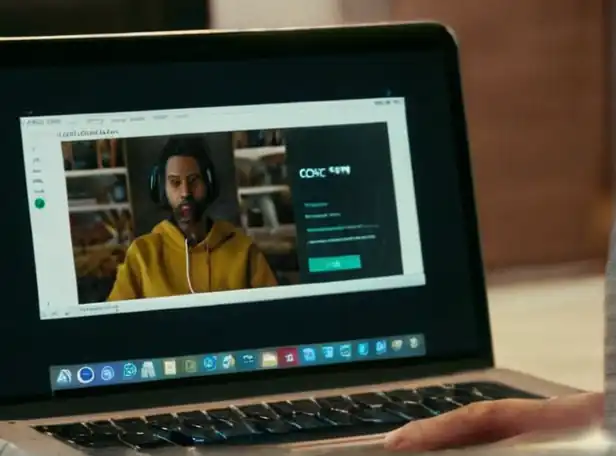¿Qué hacer si te estafan en una compra por internet? ¡Protege tus derechos como consumidor!

La realidad del comercio electrónico
En la era digital, las compras por internet han vuelto a ser una parte integral de nuestras vidas. Sin embargo, con la conveniencia y flexibilidad que ofrecen estas transacciones, también surge el riesgo de estafas y fraude.
Un mercado sin fronteras
El comercio electrónico no tiene límites geográficos, lo que significa que podemos comprar productos y servicios en cualquier parte del mundo. Aunque esta libertad es un gran avance, también puede llevar a la exposición a posibles estafadores.
La importancia de ser consciente
Es fundamental ser consciente de los riesgos involucrados en las compras por internet y tomar medidas para proteger nuestros derechos como consumidores. En este artículo, exploraremos los pasos a seguir si te estafan en una compra online y cómo puedes recuperar tus derechos.
El objetivo del artículo
artículo, discutiremos estrategias efectivas para evitar estafas en las compras por internet, cómo identificar posibles estafadores y qué hacer si se produce un fraude. Nuestro objetivo es brindarte herramientas y consejos para que puedas proteger tus derechos como consumidor y disfrutar de una experiencia segura al comprar online.
La lucha contra el fraude
En este artículo, también examinaremos las estrategias que las empresas y los gobiernos están implementando para combatir el fraude en las compras por internet. Entendemos que la seguridad es fundamental en cualquier transacción online y nos enfocaremos en proporcionarte información valiosa y confiable para proteger tus derechos como consumidor.
Comencemos
- Cómo evitar ser estafado en compras por internet
- Signos de que la venta es un fraude
- Qué hacer si te estafan en una compra online
- Procedimiento para reportar el fraude a las autoridades
- Derechos del consumidor en caso de estafa
- Compañías y herramientas para proteger tus compras en línea
- Cómo mantener la seguridad de tus datos personales
- Conclusión
Cómo evitar ser estafado en compras por internet

Revisa la reputación del vendedor
Before making a purchase, research the seller's reputation online. Check for reviews, ratings, and testimonials from other customers to ensure you're buying from a reputable source.
Verifica el dominio web
Make sure the website's URL is secure (https) and the domain name is not fake or similar to another legitimate website.
Lee las políticas de devolución y reembolso
Understand the seller's return and refund policies before making a purchase. This will help you know what to expect if something goes wrong with your order.
Evita ofertas demasiado buenas para ser verdad
Be wary of extremely low prices or offers that seem too good to be true. Legitimate sellers typically offer competitive pricing, but not ridiculously low prices.
No compartas información personal innecesaria
Only provide necessary information when making a purchase online. Avoid sharing sensitive data like credit card numbers or passwords unless absolutely necessary.
Utiliza una tarjeta de crédito con protección antifraude
Use a credit card that offers fraud protection, such as Visa's Zero Liability Policy or Mastercard's Zero Fraud Liability Guarantee.
Lee las condiciones y políticas del vendedor
Carefully read the seller's terms and conditions, including their shipping policies, return policies, and customer service contact information.
No respondas a correos electrónicos que incitan a la acción rápida
Be cautious of emails that urge you to act quickly or use scare tactics. Legitimate sellers will give you time to think about your purchase before making a decision.
Utiliza herramientas de seguridad en línea
Use security software, such as antivirus and anti-malware programs, to protect your computer from malware and other online threats.
No compres productos que no has visto antes o no son comunes
Be wary of products that seem unusual or uncommon. Legitimate sellers typically offer well-known brands or products with clear descriptions.
Lee las revisiones y comentarios de otros clientes
Read reviews and comments from other customers to get a sense of the seller's reputation and product quality.
No compres productos que no tienen descripción clara
Be wary of products that lack clear descriptions, images, or specifications. Legitimate sellers typically provide detailed information about their products.
Estas son solo algunas estrategias para evitar ser estafado en compras por internet. Recuerda siempre estar alerta y investigar bien antes de hacer una compra online.
Signos de que la venta es un fraude
Lenguaje ambiguo o confuso
If the seller's language is unclear, vague or overly technical, it may be a sign of a scam. Legitimate sellers typically provide clear and concise information about their products.
No se proporciona información detallada sobre el producto
If the seller doesn't provide detailed information about the product, its features, or its quality, it may be a red flag. Reputable sellers usually offer thorough descriptions of their products.
La oferta parece demasiado buena para ser verdad
If an offer seems too good to be true, it probably is. Legitimate sellers typically offer competitive pricing, but not ridiculously low prices.
No se proporciona información sobre la empresa o el vendedor
If the seller doesn't provide information about their company, such as their physical address or contact details, it may be a sign of a scam.
La página web no tiene SSL certificado
If the website's URL doesn't start with "https" and has no SSL certificate, it's not secure. Legitimate sellers typically have an SSL certificate to ensure customer data is protected.
No hay reviews o comentarios de otros clientes
If there are no reviews or comments from other customers, it may be a sign of a new or fake website. Reputable sellers usually have a track record of satisfied customers.
El vendedor pide pago en efectivo o transferencia
If the seller asks for payment in cash or via wire transfer, it's likely a scam. Legitimate sellers typically accept credit card payments or other secure forms of payment.
No se proporciona información sobre la entrega y el seguimiento de pedidos
If the seller doesn't provide information about shipping and tracking your order, it may be a sign of a fraudulent website. Reputable sellers usually keep customers informed about their orders.
El vendedor es evasivo o no responde a preguntas
If the seller is evasive or unresponsive to your questions, it may be a sign of a scam. Legitimate sellers typically communicate clearly and promptly with their customers.
La página web tiene muchos errores de gramática o ortografía
If the website has many grammar or spelling errors, it may be a sign of a poorly maintained or fake website. Reputable sellers usually have professional-looking websites.
No se proporciona información sobre la devolución y el reembolso
If the seller doesn't provide information about return and refund policies, it may be a sign of a fraudulent website. Legitimate sellers typically offer clear return and refund policies.
Estos son solo algunos de los signos que pueden indicar que una venta es un fraude. Asegúrate siempre investigar bien antes de hacer una compra online y no tengas miedo de pedir preguntas al vendedor.
Qué hacer si te estafan en una compra online

Comunicación con el vendedor
Try to communicate with the seller as soon as possible to resolve the issue. Send them a polite and detailed message explaining the problem.
Documenta todo
Keep a record of all correspondence, including emails and chat logs, as well as any transaction records or receipts. This will help you track your purchase and any subsequent disputes.
Contacta a la empresa de servicios financieros
If you used a credit card or PayPal to make the purchase, contact their customer service department for assistance in resolving the issue.
Reporta el incidente
Report the incident to the relevant authorities, such as the Federal Trade Commission (FTC) or your local consumer protection agency. This can help prevent similar scams from happening to others.
No pagues más dinero
Under no circumstances should you send more money to the seller in an attempt to resolve the issue. This will only encourage them to continue their fraudulent activities.
Pide ayuda a la empresa de servicios financieros
If your financial institution is unable to assist you, ask for a supervisor or someone who can help resolve the issue. They may be able to offer additional support or guidance.
Considera un reclamo
If the seller is unwilling to cooperate or provide a refund, consider filing a complaint with the Better Business Bureau (BBB) or your state's attorney general's office.
Toma medidas para evitar futuras estafas
Take this opportunity to educate yourself on how to avoid online scams in the future. Research reputable sellers and read reviews from other customers before making a purchase.
No te rindas
Don't give up! Staying calm and persistent can help you resolve the issue and get your money back.
Busca ayuda en línea
If you're unsure about what to do or need additional guidance, search online for resources and tutorials on how to deal with online scams. There are many websites and forums dedicated to helping consumers protect their rights.
No te sientas solo
Remember that you're not alone in this situation. Many people have fallen victim to online scams and have successfully resolved the issue with patience and persistence.
Toma medidas legales si es necesario
If all else fails, consider taking legal action against the seller. Consult with a lawyer or law enforcement agency for guidance on how to proceed.
Recuerda que tu seguridad y bienestar como consumidor son prioritarios en cualquier compra online. Estos pasos pueden ayudarte a resolver el problema y obtener el resultado deseado.
Procedimiento para reportar el fraude a las autoridades
Federal Trade Commission (FTC)
- Go to the FTC website (www.ftc.gov) and click on "File a Complaint" to report the fraud.
- Provide detailed information about the fraudulent transaction, including dates, amounts, and contact information for the seller.
- The FTC will use this information to investigate and take action against the fraudulent company.
Internet Crime Complaint Center (IC3)
- Visit the IC3 website (www.ic3.gov) and submit a complaint about the fraudulent activity.
- Provide as much detail as possible, including screenshots of emails or websites, and any other relevant information.
- The IC3 will forward your complaint to the appropriate law enforcement agency for investigation.
Your State Attorney General's Office
- Visit your state attorney general's website (usually found through a simple online search) and submit a complaint about the fraudulent activity.
- Provide detailed information about the transaction, including dates, amounts, and contact information for the seller.
- The attorney general's office will use this information to investigate and take action against the fraudulent company.
Your Local Police Department
- Contact your local police department and file a report about the fraudulent activity.
- Provide as much detail as possible, including screenshots of emails or websites, and any other relevant information.
- The police department may be able to provide additional guidance on how to proceed with the investigation.
Other Government Agencies
- Depending on the type of fraud you experienced, there may be other government agencies that can assist in reporting the incident. For example:
- Federal Bureau of Investigation (FBI): www.fbi.gov
- U.S. Postal Inspection Service: www.usps.com/postal-inspection-service
- Securities and Exchange Commission (SEC): www.sec.gov
What to Include in Your Report
- Be sure to include as much detail as possible in your report, including:
- Dates and times of the fraudulent activity
- Amounts involved in the transaction
- Contact information for the seller (including email addresses and phone numbers)
- Any relevant screenshots or attachments (e.g. emails, website captures, etc.)
- Your own contact information (name, address, phone number, etc.)
Follow Up
- After submitting your report to the authorities, be sure to follow up with them periodically to check on the status of the investigation and to provide any additional information they may request.
- Remember that reporting fraud takes time and effort from law enforcement agencies, so be patient and persistent in seeking justice.
Derechos del consumidor en caso de estafa
Right to Refund
- As a consumer, you have the right to request a refund for any goods or services that were not delivered or are defective.
- If the seller is unwilling to provide a refund, you can escalate the issue to your credit card company or PayPal.
Right to Compensation
- You may be entitled to compensation for any losses or damages resulting from the fraudulent activity.
- Keep records of all correspondence and transactions to support your claim.
Right to Protection
- Under consumer protection laws, you are protected from fraudulent activities and have the right to seek legal action against the seller.
- Report the incident to the authorities and take steps to prevent future fraud.
Right to Information
- As a consumer, you have the right to know what is happening with your money and how it was used.
- Ask for clear information about the transaction, including dates, amounts, and contact details of the seller.
Right to Dispute Resolution
- If there's a dispute between you and the seller, you can seek resolution through consumer protection agencies or online dispute resolution platforms.
Right to Seek Justice
- As a consumer, you have the right to seek justice against fraudulent sellers.
- Report the incident to the authorities and take steps to prevent future fraud.
Additional Protections
- Depending on your location, there may be additional protections in place for consumers. For example:
- Credit card companies often offer protection against unauthorized transactions.
- Some states have specific laws protecting consumers from fraudulent activities.
- Online marketplaces may also provide additional protections for buyers and sellers.
Don't Give Up
- Remember that reporting fraud and seeking justice is a process that requires patience and persistence.
- Don't give up – keep pushing forward, and seek support from authorities and consumer protection agencies if needed.
Compañías y herramientas para proteger tus compras en línea

Trusted Certifiers
- Companies like Truste, BBB Online, and VeriSign provide trust marks that indicate a website's commitment to online security.
- Look for these certifications when shopping on new websites.
Security Software
- Install antivirus software and keep it updated to detect and prevent malware infections.
- Use anti-phishing software to protect against fraudulent emails and websites.
Password Managers
- Use a password manager like LastPass, 1Password, or Dashlane to generate and store unique, complex passwords for each website.
- This will help you avoid using the same weak password across multiple sites.
Two-Factor Authentication (2FA)
- Enable 2FA on your accounts whenever possible. This adds an extra layer of security by requiring a second form of verification, such as a code sent to your phone.
- Many online retailers and financial institutions offer 2FA options for added protection.
Browser Extensions
- Browser extensions like HTTPS Everywhere and NoScript can help protect you from malware and phishing attacks.
- These extensions can also alert you to potential security risks on websites.
Credit Card Protections
- Some credit cards, such as those issued by Visa and Mastercard, offer zero-liability policies for unauthorized transactions.
- Report any fraudulent activity to your credit card company immediately.
Online Marketplaces
- Online marketplaces like Amazon, eBay, and Etsy often have built-in protections for buyers, including dispute resolution processes and seller ratings.
- Make sure to read reviews and check seller ratings before making a purchase on these platforms.
Consumer Protection Agencies
- Consumer protection agencies like the Federal Trade Commission (FTC) and the Better Business Bureau (BBB) offer resources and support for consumers who have been victimized by online fraud.
- Report any fraudulent activity to these agencies and seek their guidance on how to proceed.
Cómo mantener la seguridad de tus datos personales
Monitor Your Credit Report
- Regularly check your credit report to ensure it's accurate and up-to-date.
- You can request a free copy of your credit report from the three major credit reporting agencies (Experian, TransUnion, and Equifax) once a year.
Use Strong Passwords
- Create unique, complex passwords for each account and consider using a password manager to keep them organized.
- Avoid using easily guessable information like birthdates or common words.
Be Cautious with Public Wi-Fi
- Avoid accessing sensitive information (like banking or email) on public Wi-Fi networks.
- Consider using a VPN (Virtual Private Network) when connecting to public Wi-Fi to add an extra layer of security.
Keep Software Up-to-Date
- Regularly update your operating system, browser, and other software to ensure you have the latest security patches.
- Enable automatic updates whenever possible to stay protected.
Use Two-Factor Authentication (2FA)
- Enable 2FA on accounts that offer it to add an extra layer of security.
- Use a physical token or authenticator app like Google Authenticator or Microsoft Authenticator.
Be Mindful of Phishing Attempts
- Be cautious when receiving unsolicited emails or messages asking for sensitive information.
- Never click on suspicious links or download attachments from unfamiliar sources.
Shred Sensitive Documents
- Shred any documents containing sensitive information, such as credit card numbers or social security numbers, before disposing of them.
- Consider using a secure document shredding service if you're unsure how to properly dispose of sensitive materials.
Use Encrypted Messaging Apps
- Use encrypted messaging apps like Signal or WhatsApp for sensitive conversations.
- Avoid sharing sensitive information over unencrypted platforms like SMS or email.
Conclusión

Final Thoughts
- As a consumer, it's essential to be aware of the potential risks and take steps to protect yourself when shopping online.
- Remember that you have rights as a consumer, and it's okay to stand up for them.
Stay Informed
- Stay informed about the latest online scams and fraud schemes by following reputable news sources and consumer protection agencies.
- Consider signing up for email newsletters or alerts from organizations like the Federal Trade Commission (FTC) and the Better Business Bureau (BBB).
Take Action
- Don't hesitate to report any suspicious activity or fraudulent transactions to your credit card company, online marketplace, or local authorities.
- Take advantage of resources available to you, such as consumer protection agencies and online forums.
Empower Yourself
- Educate yourself about online security and fraud prevention techniques to stay ahead of potential threats.
- Share your knowledge with others to help create a safer and more informed online community.
Remember
- You are not alone in this situation. Many people have experienced similar situations and have successfully resolved them.
- By taking the right steps and staying proactive, you can protect yourself and your rights as a consumer.
By following these tips and staying vigilant, you can minimize the risk of falling victim to online fraud and ensure a safe and successful online shopping experience.
Deja una respuesta
Entradas relacionadas